Bugatti Type 57 Classic Cars for Sale
When looking for an advanced pre-war touring car with significant engineering depth, the Bugatti Type 57 stands out amongst collectors. Produced between 1934 and 1940 in a range of body styles and engine variants, it showcases Bugatti’s commitment to technological innovation and cutting-edge design.—Read more below for the full history and specifics of the Bugatti Type 57 series.
Search results
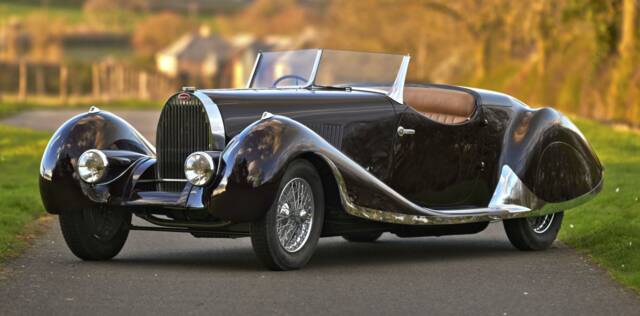

1937 | Bugatti Type 57 C
Kompressor/Matching Numbers Motor
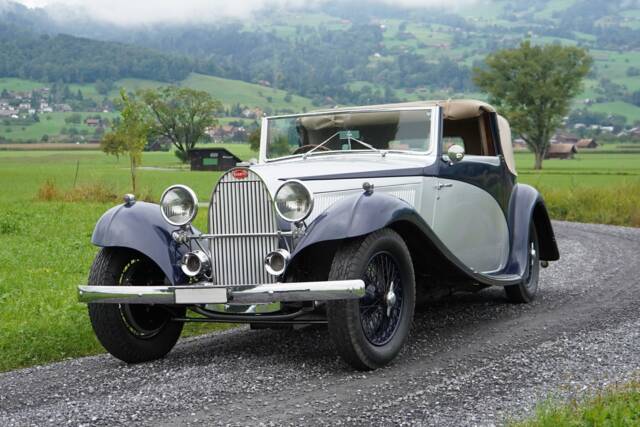
1934 | Bugatti Typ 57
Three Position DHC by J. Gurney Nutting - One Off
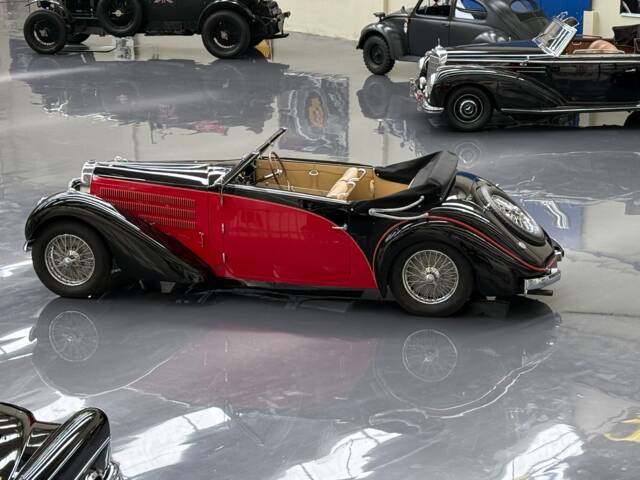
1937 | Bugatti Typ 57
Stelvio by Gangloff, Ex Pernod
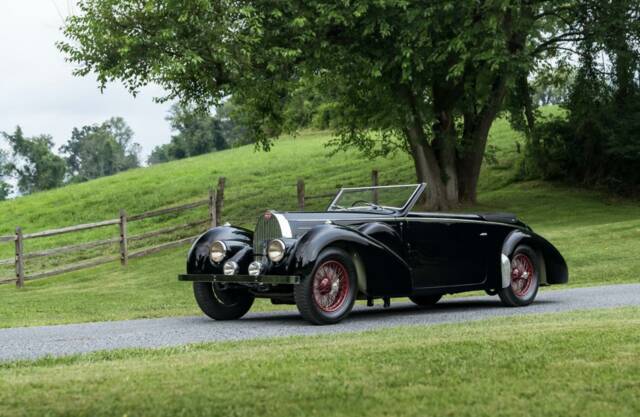
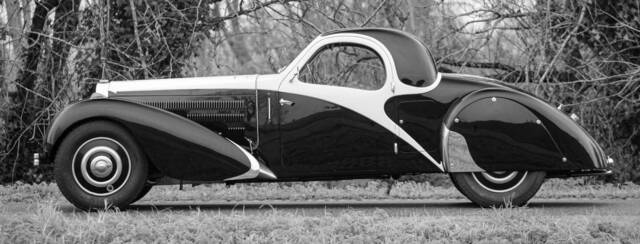
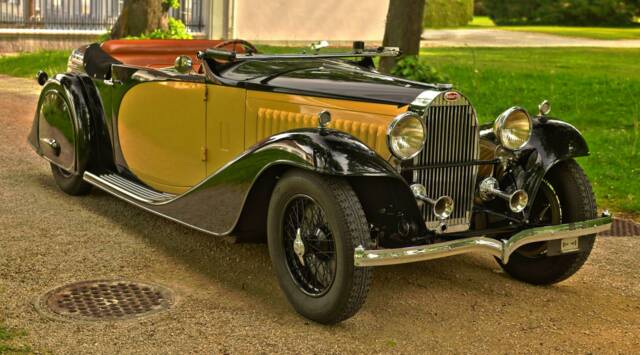
Bugatti Type 57 listing references from Classic Trader
Below you will find listings related to your search that are no longer available on Classic Trader. Use this information to gain insight into availability, value trends, and current pricing for a "Bugatti Type 57" to make a more informed purchasing decision.
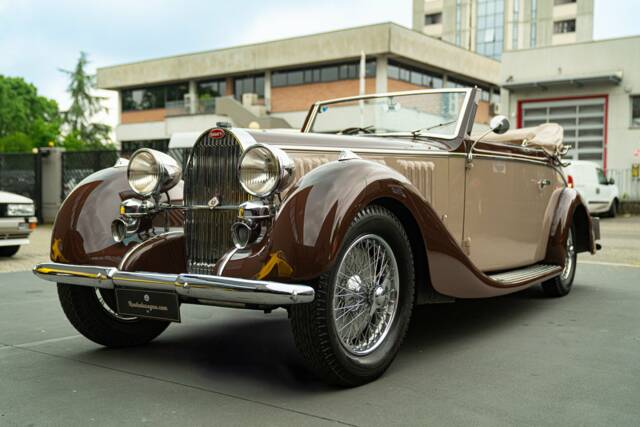
1936 | Bugatti Type 57 S
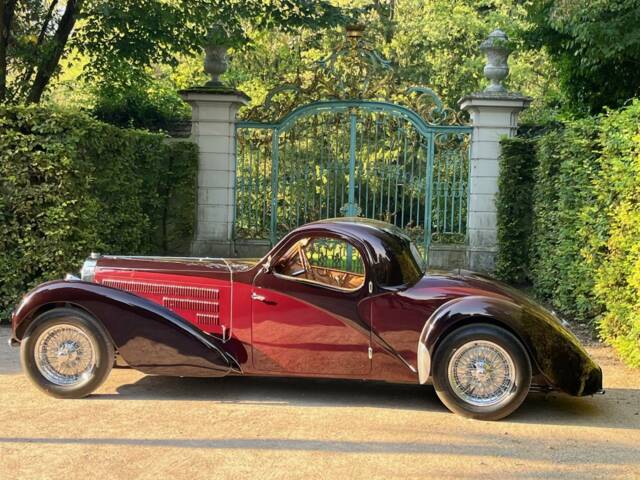
1937 | Bugatti Type 57 Atalante
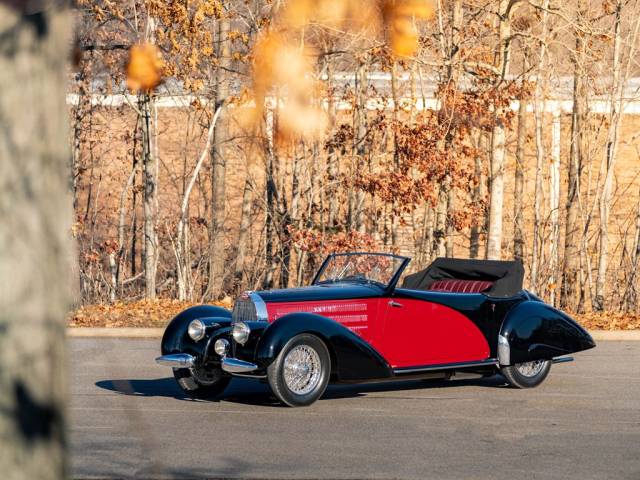
1939 | Bugatti Typ 57
1939 Bugatti Type 57 Cabriolet by Letourneur et Marchand
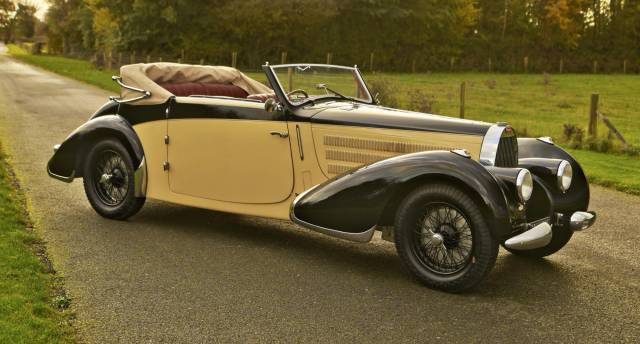
1937 | Bugatti Type 57 C
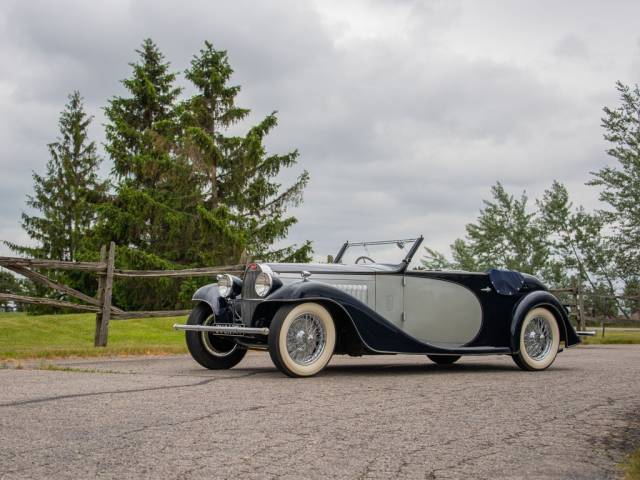
1934 | Bugatti Type 57 Stelvio
1934 Bugatti Type 57 Stelvio
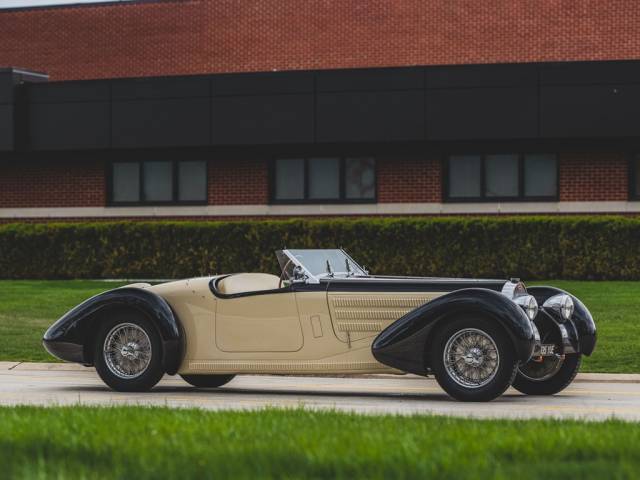
1938 | Bugatti Typ 57
1938 Bugatti Type 57 Roadster in the style of Gangloff
Development and Significance of the Bugatti Type 57
The Bugatti Type 57 was engineered as a wholly new concept by Jean Bugatti, the son of Ettore Bugatti, marking a distinct generational shift in Bugatti's design philosophy. Built in Molsheim from 1934 to 1940, only 710 units left the factory, highlighting its exclusivity even before scarcity set in due to the outbreak of World War II. In the midst of the 1930s economic challenges, the Type 57 defied market trends by offering an uncompromising level of mechanical sophistication and elegance. The series was known for its calm running, smooth operation and high reliability—attributes rooted in innovative engine design and chassis refinement. As a result, the Type 57 helped cement Bugatti’s global reputation as a manufacturer of advanced and desirable motor cars.
Model History and Evolution within the Type 57 Series
The Bugatti Type 57 debuted in 1934 as the brand’s statement tourer and became the foundation for subsequent developments. Its predecessor, the earlier Type 49, was quickly overshadowed by Jean Bugatti's more ambitious engineering. Over time, the Type 57 family split into notable derivatives: standard 57, 57C (supercharged), 57S (Surbaissé, meaning lowered chassis for sport), and the ultra-exclusive 57SC (combining lowered chassis and supercharger). The Type 57 laid the groundwork for the later, post-war Type 101, but remains the pre-war pinnacle of Bugatti’s road cars.
Highlights and Unique Features of the Bugatti Type 57
The Type 57 is admired for its inline-eight engine with 3,257 cm³ displacement and twin overhead camshafts, delivering about 135 hp in naturally aspirated form. Its five-bearing crankshaft and gear-driven rear camshaft enhance smoothness, while the direct gearbox mount to the block and robust clutch reflect performance intent. Four body styles were offered by Bugatti—Atalante (2-seat coupé), Ventoux (4-seat coupé), Stelvio (cabriolet), and Galibier (sedan). In addition, coachbuilders like Gangloff and Corsica delivered custom versions. Among its most daring creations is the Aérolithe, built with riveted magnesium-aluminium panels, while the Type 57 Atlantic took the form to production and is widely regarded by design aficionados. Bugatti’s pursuit of sporting excellence and engineering precision is evident throughout the Type 57’s specifications and craftsmanship.
Technical Data
Special Editions and Collectible Models
Certain variants of the Type 57 are especially sought after and were produced in very limited volumes:
- Type 57S ('Surbaissé'): Features a lowered chassis, lighter weight, and comprehensive chassis modifications for more agile handling.
- Type 57C: Adds a Roots-type supercharger for a notable power increase.
- Type 57SC: Merges the lowered S chassis and the supercharger—ultimate road specification for the series.
- Atlantic: Only four built with aluminium-magnesium riveted coachwork; two survive. This model is often cited as one of the most technically and stylistically advanced automobiles of its time.
- Aérolithe: A show car constructed as a prototype with groundbreaking design and magnesium body panels.
Weak Spots and Common Issues
Due to the limited production and high engineering complexity of the Type 57, sourcing original replacement parts and maintaining factory-correct specifications can be challenging. The unique inline-eight and supercharged derivatives require regular expert maintenance, especially regarding valve adjustment, the gear-driven camshaft, and the indirectly mounted gearbox. Preservation of the highly individualised coachwork often involves specialised restoration knowledge, particularly with exotic materials like magnesium (Aérolithe) or closely riveted aluminium (Atlantic).
Engine and Performance, Transmission and Handling
Standard Type 57 versions produce approximately 135 hp, delivered smoothly with minimal vibration, thanks to the five-bearing crankshaft and the direct-coupled gearbox. Supercharged 57C and 57SC models raise output significantly, with the Atlantic rated at up to 200 hp and capable of approximately 225 km/h (140 mph). The rigid chassis and carefully tuned suspension deliver stability and accurate road-holding at speed, especially in Surbaissé versions. The steering is precise, but period brakes and suspension require expert adjustment for safe operation in modern traffic. Prominent models include the Atalante coupé for its distinctive shape and lightweight design, the Stelvio cabriolet for open-top driving comfort, the sporting Type 57S, and the ultimate road car—the Type 57SC Atlantic.
Interior, Comfort, Exterior and Design
Jean Bugatti collaborated with both in-house and third-party coachbuilders, resulting in cars that reflect both contemporary Art Deco trends and aerodynamic experimentation. Interiors often feature bespoke upholstery, intricate woodwork, and meters arranged for clarity. Exteriors are defined by sweeping lines, split windscreens on some versions, and dramatic grilles; colour schemes ranged from sober to adventurous. Special bodies like the Atlantic and Aérolithe incorporated pronounced dorsal seams and rivets where magnesium precluded welding. Accessories and custom options varied by client and coachbuilder, adding significant uniqueness to each chassis.
Other Relevant Features
The Bugatti Type 57 was a frequent showpiece at international auto salons in the 1930s, representing the zenith of French automotive design and luxury. Some examples kept their factory-spec technology—including transmission, frame, and carburation—through decades of ownership, underscoring the enduring quality of Jean Bugatti’s engineering.
Summary
The Bugatti Type 57 stands as one of the most developed and ambitious grand tourers of its pre-war era, combining high-precision engineering, distinctive design, and a breadth of specification ranging from elegant four-door saloons to lightweight, high-performance coupés. The overwhelming share of Type 57s both in supply and market interest confirms its unique status within the classic car landscape.






